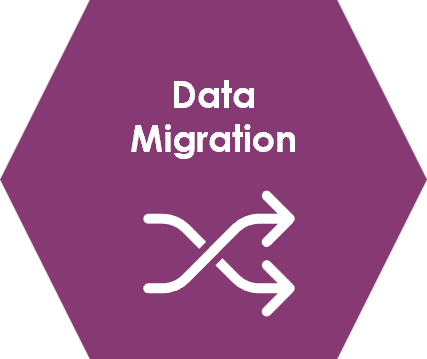
Data Migration
What is it?
Data Migration is the process of moving data and information from one system, storage, or format to another.
While moving data is easy, an enterprise data migration project must consider the following:
- Transforming data model to align it with new systems and applications.
- Mapping data from source to target.
- Understanding how the data will be used in business processes, reporting systems, and analytics systems.
- Ensuring that only accurate, relevant and necessary data is transferred.
Amino helps businesses approach these challenges by helping organisations understand, transform, and migrate the right data, in the right context, for the right purpose.

Why is it important?
To continuously reach new goals, optimise business processes, and scale operations, enterprises must often incorporate new systems and processes within their digital architecture.
However, the overall success of new application deployments will always depend on the quality of data, which itself hinges on the data migration strategy.
While organisations will usually commit 20% of a program’s budget to data migration, it is often the main cause of go-live challenges and risks. Delays, lack of trust, cost overruns, and user uptake almost always stem from a lack of data integrity.
Amino are experts in mitigating these risks by building a consistent methodology that enables organisations to migrate data reliably and efficiently, setting the foundations for a successful deployment and continuous improvement.
How Amino can help you deliver this
“Systems are temporary, data lives forever.”
Amino has extensive experience applying its proven methodology and data discipline focus, helping organisations migrate their data to meet specific business outcomes. By focusing on data integrity and important data elements, we bring new deployments live more quickly and reliably.
Our approach centres on risk mitigation and reaching business goals. It consists of the following steps:
- Understanding the integrity of the data.
- Linking the data to business performance and decision-making processes.
- Teaming up with process owners, including business stakeholders and IT teams, to ensure that the right data is delivered in the appropriate context.
- Designing a project plan that aligns with your Systems Integration partner’s understanding and processes.
- Ensuring long-term data integrity and sustainability by aligning the project with data governance and data management policies and rules.
Please contact us to discuss how we can help you with your data migration and business transformation program requirements
